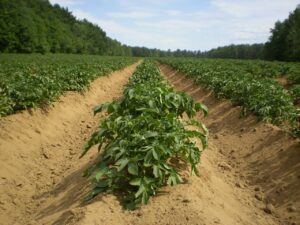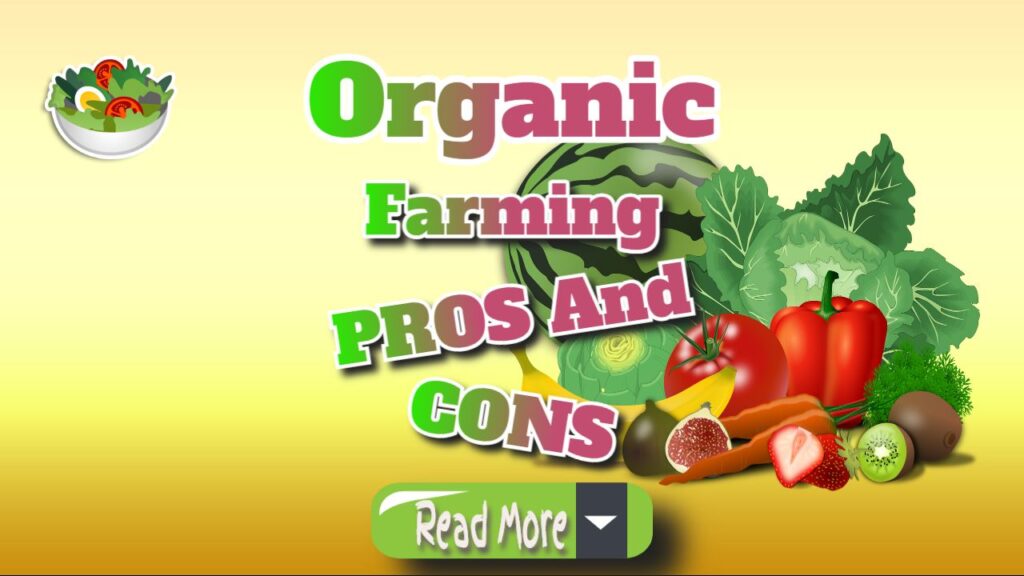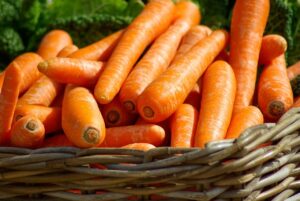Discover Our Comprehensive Guide on Organic Farming Practices
- Master the Fundamental Concepts of Organic Farming
- Explore the Multifaceted Benefits of Adopting Organic Farming
- Identify and Address the Key Challenges of Organic Farming
- Uncover the Core Principles and Significance of Organic Farming
- Gain Insights into Organic Farming: Essential Characteristics and Benefits
- Understand How Supporting Organic Farming Enhances Health and Environmental Sustainability
- Learn About the Soil Association’s Definition of Organic Farming
- See How Simone Thomas Wellness Advocates for Organic Farming Practices
- Improve Soil Conservation and Management with Organic Techniques
- Review Recent Research on the Environmental Effects of Organic Farming
- Evaluate the Economic Aspects of Organic Products
- Acquire a Detailed Understanding of the Advantages and Disadvantages of Organic Farming
Master the Fundamental Concepts of Organic Farming
Organic farming embodies a holistic and integrated approach to agriculture, prioritizing natural cultivation techniques for the growth of crops, livestock, and poultry. This sustainable agricultural practice hinges on methods such as green manure, composting, biological pest control, and crop rotation. These techniques not only enhance productivity but also protect the environment from harmful practices. By promoting the cycle of natural resources, organic farming sustains biodiversity and fosters ecological balance, which is essential for sustainable food production. Some of the fundamental practices include using cover crops, applying animal manure, and implementing strategic crop rotations. Together, these methods break pest and disease cycles, enhance soil fertility, and promote a biologically active soil environment, ultimately creating a resilient ecosystem that supports healthy farming.
The core philosophy of organic farming focuses on managing ecosystems to improve soil health while minimizing dependency on synthetic inputs. This approach necessitates a mastery of plant breeding to strengthen resilience without the use of genetic modification. It also involves the implementation of effective pest management strategies that eschew synthetic pesticides, opting instead for natural fertilizers. Innovative techniques championed by organic farming advocates, like the no-till approach, highlight the accessibility and effectiveness of these methods for both small-scale gardeners and large-scale farmers, yielding environmental and economic benefits without the need for expensive equipment. The dedication to natural farming cultivates a profound connection to the land and its ecosystems, fostering sustainability and longevity in food production.
The growth of organic farming has been significantly influenced by increasing consumer awareness regarding pesticide residues and the potential risks linked to genetically modified organisms (GMOs). Effective marketing strategies from organic proponents have reshaped consumer preferences, leading many farmers to transition toward organic practices to enhance profitability. However, this shift has also revealed cases of fraudulent labeling, where conventional growers misrepresent their products as organic. A critical challenge remains in developing reliable testing methods to differentiate genuinely organic crops from those treated with synthetic fertilizers, as there can be minimal differences in the basic biological characteristics of these plants.
Explore the Multifaceted Benefits of Adopting Organic Farming
As the global population is projected to rise significantly in the coming century, the pressing need to feed this expanding demographic sustainably is becoming increasingly critical. Conventional agricultural practices, especially industrial methods, exert considerable pressure on the earth’s finite land resources, which are deteriorating due to extensive farming practices. Reports from National Geographic News indicate that food production currently claims nearly half of the Earth’s land surface, raising alarms about the depletion of remaining fertile zones. To address this urgent situation, it is essential to conduct a thorough analysis of the strengths and weaknesses inherent in both modern industrial agriculture and organic farming practices.
A foundational principle of organic farming is the absolute ban on synthetic chemical fertilizers, antibiotics, herbicides, and pesticides. The primary objective of organic methods is to produce agricultural outputs—including fibers, grains, vegetables, fruits, and livestock—using the most natural and sustainable practices available. Organic farming excels at preserving our water and soil resources, maintaining ecological balance, and efficiently utilizing renewable resources. Nevertheless, it is crucial to recognize the challenges faced by organic farmers. In the following sections, we will delve into the extensive benefits and potential drawbacks of organic farming practices, offering a balanced perspective on this vital agricultural methodology.
As you deepen your understanding of organic farming, you may find yourself pondering its significance and future implications. The increasing global population necessitates a shift from conventional farming practices, which heavily depend on chemical inputs, to more sustainable techniques that prioritize ecological integrity. The negative impacts of chemical fertilizers and pesticides on soil, air, and water quality highlight the urgent need for organic farming practices that advocate for ecological health and the provision of non-toxic food options for consumers.
Despite occupying only about 1% of the world’s agricultural land, organic farming represents an underutilized opportunity to address one of humanity’s most pressing challenges: producing sufficient food for a projected population of 10 billion by 2050 without causing extensive deforestation or environmental harm. This assertion is supported by research conducted by my PhD student, Jonathan Wachter, which examined numerous scientific studies comparing the long-term sustainability of both organic and conventional agriculture. The published research, titled “Organic agriculture in the 21st century,” adhered to the four primary sustainability criteria established by the National Academy of Sciences: productivity, economic viability, environmental soundness, and social justice.
Identify and Address the Key Challenges of Organic Farming
While organic farming is celebrated for its numerous benefits, it also presents several inherent challenges. Research conducted by CNN indicates that the yields of organic crops may be significantly lower—by as much as 25%—compared to their conventionally grown counterparts. This yield disparity can be influenced by seasonal variations and crop types, but the intrinsic difficulties of organic cultivation can contribute to slower growth rates. Furthermore, the methods employed in organic farming often result in higher prices for consumers than those associated with conventionally produced food items.
The surging consumer demand for organic products has dramatically reshaped the market landscape. Once viewed as a niche market primarily catering to the affluent or environmentally conscious, organic food has gained widespread acceptance among diverse consumer demographics. Organic farming practices, which eliminate the use of artificial fertilizers and pesticides, favor traditional approaches to pest and nutrient management, such as crop rotation, natural barriers, and ecological pest control methods that utilize nature’s own defenses.
Over the past two decades, the organic agriculture sector has experienced remarkable growth, with organic food and beverage sales soaring from $1 billion in 1990 to an impressive $26.7 billion by 2010. This extraordinary expansion has been fueled by annual increases averaging between 12% and 21% (OTA, 2011). Notably, by 2005, all 50 states in the U.S. reported the presence of certified organic farms, collectively covering over 4 million acres (USDA-ers, 2008). However, with nearly 70% of American consumers now purchasing organic products (Hartman Group, 2008), many organic farmers are striving to keep pace with the rapid growth of their market, resulting in a supply-demand gap.
The increasing population in areas like Florida is placing development pressures on natural resources, leading to environmental degradation. Embracing organic agriculture can help alleviate some of this environmental strain by promoting sustainable food production methods. By reducing the use of pesticides and herbicides, organic farming nurtures diverse ecosystems that include a variety of plants, insects, and wildlife (McIlwain 2004). Moreover, organic practices are generally less energy-intensive and produce less waste compared to conventional farming methods. A study conducted by Washington State University found that growing organic apples is approximately 7% more energy-efficient than conventional apple farming (McIlwain 2004).
Uncover the Core Principles and Significance of Organic Farming
Organic farming is characterized by its unwavering dedication to soil health and sustainability, ensuring that agricultural practices do not degrade the land or contribute to desertification. This restorative approach underscores the importance of environmental stewardship, aiming to preserve the health of our ecosystems for future generations. Sustainability is central to organic farming’s philosophy, driving practices that enhance soil vitality and support biodiversity.
To keep readers informed about the latest trends in organic farming, Organic Farming Magazine serves as the UK’s leading publication, published up to three times a year by the Soil Association. Each issue offers valuable insights into current news, policy changes, and market trends, along with in-depth technical articles and reports detailing the latest field trials and research in organic farming methods. Topics covered include livestock management, horticulture, and various agricultural disciplines, providing a comprehensive overview of the organic farming sector.
A crucial component of organic farming is the implementation of organic pest control, which completely avoids chemical pesticides. This practice not only preserves the soil’s integrity but also promotes a healthier ecosystem. When executed effectively, organic pest control can sustain thriving crops for generations. Acquiring comprehensive knowledge about the principles of organic pest control is essential for anyone interested in the world of organic farming.
The growing demand for organic fruits and vegetables at farmers’ markets is driven by a heightened public awareness of health and nutrition. Establishing a successful orchard requires careful planning and meticulous attention to detail. This resource provides essential information on creating optimal planting strategies while deepening your connection with nature. Additionally, it discusses sustainable farming techniques alongside advanced practices such as grafting various tree varieties. Furthermore, it highlights the best species to grow, what to avoid, and crucial insights into biodiversity and pollination practices that enhance organic farming.
Gain Insights into Organic Farming: Essential Characteristics and Benefits
While contemporary agricultural practices offer certain benefits, the misuse of pesticides can yield toxic consequences for plants, animals, and the environment. Organic farming provides a sustainable alternative that prioritizes the health of our ecosystems. In the United States, nearly 44% of agricultural imports include fruits, vegetables, wine, hops, and various specialty crops. This reliance on imports can create ethical dilemmas and social issues within farming communities, as some may exploit labor forces to cultivate crops on their behalf.
Understand How Supporting Organic Farming Enhances Health and Environmental Sustainability
Supporting organic farming presents numerous advantages not just for the soil and crops but for the broader ecosystem, including animals and humans. Organic farming practices, as delineated by Foam Organics International, offer a multitude of benefits extending beyond mere agricultural output.
It is vital to recognize that organic food often carries a higher price tag compared to non-organic alternatives. However, the benefits of consuming organic foods go beyond taste and nutrition; they may also reduce your exposure to antibiotic-resistant bacteria. Additionally, organic products can be prepared and frozen without significantly compromising their nutrient density. While organic food may not always be the most budget-friendly option, its production methods advocate for health and sustainability, making it a valuable investment for conscientious consumers.
Currently, organic farming comprises only about 1% of the global agricultural landscape, highlighting a significant opportunity for growth. This limited presence poses challenges not only for food quality but also for the stewardship of our land and planet. Organic farming methods are crucial in preserving the soil’s organic composition, helping to mitigate the ongoing degradation of the ozone layer caused by pesticides and emissions from various agricultural machinery.
Organic milk exemplifies the numerous advantages of organic farming. Many individuals who are lactose intolerant often turn to soy milk as an alternative; however, organic options frequently provide superior health benefits. Consumer preferences also influence this trend, as many people find organically produced food to be more flavorful and satisfying. Notably, the USDA mandates that at least 70% of ingredients in products labeled as organic must originate from organic sources. Concerns surrounding synthetic additives in the food supply have been linked to serious health issues, including infertility, certain cancers, Parkinson’s disease, and endocrine and autoimmune disorders.
Learn About the Soil Association’s Definition of Organic Farming
The environmental consequences of synthetic fertilizers are severe; their runoff into waterways poses significant threats to aquatic ecosystems and overall water quality. In contrast, organic fertilizers do not leach from the soil as easily and enhance soil structure positively. According to the Organic Trade Association, organic fertilizers can boost biodiversity by up to 30% compared to their synthetic counterparts.
The Organic Farming Digest, published between 1946 and 1954, was the first magazine dedicated to organic farming, produced by an agricultural association based in Sydney. This quarterly publication featured contributions from both Australian authors and international experts, covering a wide range of topics related to organic farming and gardening. Eventually, this publication became the official magazine of the Living Soil Association of Tasmania, with its final issue released in December 1954.
According to the USDA Organic Agriculture Study Team, organic farming is defined as a production system that largely avoids or eliminates the use of synthetic fertilizers, pesticides, growth regulators, and feed additives. Instead, it relies on techniques such as crop rotation, biological pest control, animal manure, crop residues, and mechanical tillage to enhance soil productivity and manage pests. Organic farmers aim to operate in harmony with nature, fostering biodiversity to create a balanced ecosystem rather than relying on artificial inputs.
The U.S. Department of Agriculture defines organic farming as an agricultural system that responds to specific site conditions and integrates cultural, biological, and mechanical practices to promote resource cycling, support ecological balance, and maintain biodiversity. Essentially, organic agriculture prioritizes natural methods over synthetic approaches to cultivate healthy crops and nurture vibrant soils.
Improve Soil Conservation and Management with Organic Techniques
The quest for a sustainable and green environment has emerged as a global priority, with research indicating that organic agriculture can significantly contribute to this goal. Long-term studies reveal that organic farming not only fosters ecological balance and biodiversity but also supports biological cycles essential for environmental sustainability. The primary goals of organic farming encompass effective soil management and conservation, nutrient cycling, ecological balance, and the preservation of biodiversity. These practices are crucial in mitigating the effects of global climate change while positively contributing to environmental conservation efforts.
As previously mentioned, pest management in organic farming heavily relies on crop management and biological control strategies. The ban on synthetic fertilizers and pesticides encourages the preservation of natural predators and beneficial insects, thereby enhancing the overall health of the ecosystem. The absence of harmful pesticides increases the diversity of crop pollinators and decreases pesticide residues in food products. Organic farms, managed with a focus on biodiversity, also nurture environments where microorganisms thrive, leading to improved soil fertility and enhanced ecosystem sustainability. Diverse cropping systems and the cultivation of hedgerows create habitats for beneficial insects and wildlife, thereby bolstering biodiversity within organic farming practices.
Review Recent Research on the Environmental Effects of Organic Farming
1 January, 2021
Research indicates that genetically modified organisms (GMOs) can negatively impact local biodiversity. While industrial agriculture provides consumers with access to a wider variety of food options and promotes balanced diets, the introduction of GMOs has sparked considerable controversy among consumers. Understanding the implications of GMOs, alongside the distinctions between GMO, non-GMO, and organic crops, is essential for making informed consumer choices and guiding agricultural practices.
Evaluate the Economic Aspects of Organic Products
The cost of organic food typically surpasses that of conventional produce, often by significant margins. The organic food market lacks the well-defined pricing structures found in other agricultural sectors, which can create difficulties for specialty farmers competing in the marketplace. Many communities have responded to this issue by establishing food cooperatives with local farmers, allowing consumers to prepay for their organic produce, which they can collect at the end of the growing season.
It is clear that organic products often come at a premium—prices for organic items can be 50% to 300% higher than conventional alternatives. The labor-intensive nature of organic farming contributes to these price differences. Despite this, organic products yield significantly higher returns on investment for both retailers and farmers. Consumers are increasingly willing to pay a premium for organically produced items, although supply continues to be limited.
Moreover, organic food generally has a shorter shelf life compared to conventional products. For farmers, growing crops for the organic market involves heightened physical demands. While conventional farming often focuses on maximizing yields of specific crops, organic farming strategies emphasize minimizing off-farm inputs and external factors that could affect growth. Nonetheless, the environmentally friendly practices associated with organic farming significantly contribute to ecological balance and sustainability.
The development of organic farming practices by “Kusto Agro” highlights a growing commitment to expanding cultivated land and increasing crop diversity. In Europe, organic products have gained popularity among consumers, despite their higher costs. This trend represents a lucrative business opportunity, as the global market for organic products continues to expand at an annual growth rate of 10-15%. However, to compete internationally, obtaining the appropriate certification is crucial.
While organic farming has numerous benefits, it is essential to acknowledge its limitations and challenges. The following section will delve into the most significant pros and cons of organic farming practices.

Acquire a Detailed Understanding of the Advantages and Disadvantages of Organic Farming
Written by Behind the Plough | Feb 13, 2019, | Agricultural Resources, Organic Farming
The ongoing debate surrounding conventional versus organic farming continues to captivate public interest. However, it is crucial to recognize that both farming methods possess unique advantages and disadvantages. Ultimately, the decision regarding which practices to adopt rests with individual farmers, who must evaluate their unique circumstances and aspirations.
While organic food often has a shorter shelf life compared to its conventional counterparts, producing crops for market can be physically demanding for farmers. Conventional agricultural methods may focus on cultivating specific, high-yield crops, while organic farming necessitates a more integrated approach that minimizes reliance on external inputs. Organic farming practices are inherently more eco-friendly, yet they also present their own set of challenges, particularly in maintaining soil quality and ecological balance.
Managing weeds, pests, and plant diseases in organic farming requires a comprehensive and integrated approach. This systems-based strategy involves utilizing a variety of tools and techniques rather than relying solely on one method, such as pesticide application. This approach, known as Integrated Pest Management (IPM), enhances the effectiveness of organic-approved pesticides while potentially reducing overall usage. Although IPM is not a new concept, integrated strategies have been employed for centuries, albeit without a standardized term.
At its core, organic farming embodies the principle of interconnectedness between soil, plants, animals, and humans. Its role in sustainable agricultural practices is to enhance the health of both the ecosystem and the food produced.
The Article Organic Farming: Key Pros and Cons Explained First Appeared ON
: https://ad4sc.com





Your guide on organic farming captures the essence of a movement that goes beyond agricultural practices; it’s about stewardship of our planet and our health. I’ve seen firsthand the transformation that organic farming can bring—not only in terms of soil health but also in fostering biodiversity. One aspect I’d love to see more discussion around is the role of technology in organic farming. For example, precision agriculture techniques can enhance our capabilities while still adhering to organic principles. This fusion of traditional practices with modern technology could address some of the key challenges you mentioned, particularly in scaling organic farming for larger operations.
You bring up such an important point about the intersection of technology and organic farming. It’s fascinating to think about how tools like precision agriculture can enhance organic practices without compromising the principles behind them. Personally, I’ve been intrigued by how some farmers are using drones to monitor crop health and soil moisture levels, allowing for more targeted interventions rather than a blanket approach.
I appreciate how your guide highlights the multifaceted benefits of organic farming, especially its impact on health and environmental sustainability. I’ve recently transitioned to supporting local organic farms in my community, and I’ve noticed a significant difference not only in the quality of produce but also in fostering a more vibrant ecosystem. It’s fascinating to think about how this practice can create healthier soils and habitats, benefiting local wildlife too.
I really appreciate how you’ve laid out the fundamentals of organic farming and its significance, especially given the growing conversation around sustainability these days. It feels like organic practices are gaining momentum not just as a niche approach but as a vital part of the larger agricultural narrative. I remember a time when organic was often seen as a luxury or a niche market, but now, more people are beginning to recognize it as essential for our health and the planet.
It’s refreshing to see this shift in perspective regarding organic farming. The conversation has evolved significantly, and it’s heartening to witness more people grasping its importance beyond just a matter of choice or luxury.
I completely agree with your observations about the evolving perception of organic farming. It’s fascinating to see how organic practices have shifted from being seen as a luxury to becoming integral to conversations about sustainability. As we face increasing environmental challenges and health concerns, more people are starting to understand that the health of our soil directly impacts our health and well-being.
I appreciate the depth of your guide on organic farming practices. It’s so crucial to see organic farming not just as a method of production, but as a vital part of a larger conversation about health, biodiversity, and climate resilience. I recently read about the success of community-supported agriculture (CSA) initiatives, which not only connect consumers directly with local farmers but also support sustainable practices.
Your exploration of organic farming practices embodies the profound interconnectedness between agriculture, health, and environmental sustainability. As I’ve delved into organic farming myself, I’ve found that it truly is more than just a method of cultivation; it’s a philosophy that encourages a deep respect for nature and its intricate web of life.